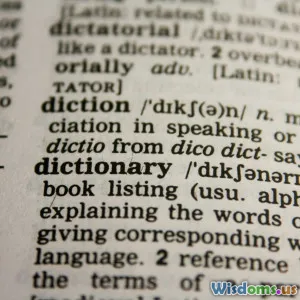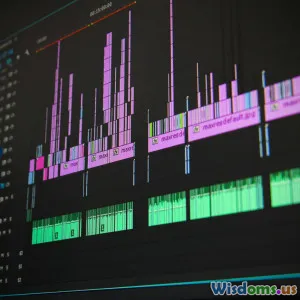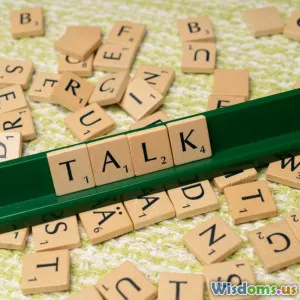
The Future Of Language Rights In Digital Spaces
8 min read Explore how language rights will evolve in digital realms, ensuring inclusivity and cultural diversity online. (0 Reviews)
The Future of Language Rights in Digital Spaces
Introduction
Imagine a world where every language, from the major global tongues to endangered indigenous dialects, has equal footing in online spaces. Our digital age connects billions globally, breaking traditional borders—but it also risks marginalizing countless languages and the communities behind them. As technology becomes ever more central to communication, commerce, and culture, the question arises: what does the future hold for language rights in the vast digital realm? This article explores the complex challenges and hopeful prospects surrounding linguistic equity, inclusivity, and preservation in the virtual world.
The Importance of Language Rights in the Digital Era
Language rights are not merely about communication; they represent the core of cultural identity and autonomy. According to UNESCO, more than 40% of the estimated 7,000 languages worldwide are endangered. The internet can function as both a platform for revitalization and a risk factor for linguistic homogenization.
Digital environments influence how languages thrive or diminish by shaping which languages gain visibility, support, and usability. For example, giants like Google, Facebook, and Twitter prioritize languages with the largest user bases, often neglecting smaller or marginalized languages. This practice not only restricts access but also amplifies a digital divide along linguistic lines.
Digital Spaces as New Arenas for Language Rights
Platform Design and Multilingual Access
Digital platforms play a pivotal role in language representation. Interface options, content moderation, virtual assistants, and multilingual support dictate user experience across languages.
Facebook, for instance, supports over 100 languages, incorporating community-driven translations, yet many minority languages remain unsupported. Microsoft's Immersive Reader extends accessibility by supporting dyslexia-friendly and read-aloud functions in multiple languages, fostering inclusivity.
Artificial Intelligence and Language Equality
Advances in AI, especially natural language processing, shape the future of language engagement. Machine translation tools like DeepL and Google Translate have democratized access but carry biases toward dominant languages and insufficient accuracy in lesser-spoken ones.
Projects like Common Voice by Mozilla work to gather speech data for low-resource languages, pushing AI to become more inclusive and broaden conversational AI’s reach.
Legal and Ethical Frameworks
The rising prominence of digital identities calls for clear legal protections of language rights online. The Council of Europe’s “Framework Convention for the Protection of National Minorities” extends into cyberspace, but enforcement varies widely.
Ethical considerations around data sovereignty, user privacy, and digital colonialism highlight the dangers of dominant cultures imposing linguistic norms on global users.
Challenges Facing Language Rights Online
Digital Divide and Technological Barriers
Access to technology remains unequal, particularly in regions with linguistic minorities. Without sufficient infrastructure, marginalized populations face compounded disadvantages in engaging digitally in their native tongues.
Commercial Incentives Versus Cultural Preservation
Commercial platforms focus on profitability, often ignoring smaller language markets deemed “unprofitable.” This economic reality sidelines minority languages and limits tools that support them, slowing digital revitalization efforts.
Platform Moderation and Censorship
Content moderation policies may inadvertently suppress minority language content or lack nuanced understanding of linguistic context, sometimes causing unjust removals or restrictions.
Future Trends Shaping Language Rights in Digital Spaces
Decentralized Technologies and Linguistic Empowerment
Blockchain and decentralized web initiatives (Web3) promise democratization of content control, potentially enabling communities to manage their linguistic data independently. For example, the Akasha project aims to give creators decentralized control over their multilingual content.
Expanding Language Data for AI Training
Increased efforts to collect and curate data for endangered and minority languages are empowering AI systems to provide better translation, voice recognition, and interactive tools. Projects like Masakhane focus on African languages to tackle linguistic inequity in AI.
Policy Innovations and Global Collaborations
The development of supranational digital rights charters emphasizing language inclusion can set standards for fair treatment, multilingual education in digital literacy, and proactive linguistic diversity promotion.
Real World Examples and Case Studies
Indigenous Languages and Digital Revitalization
The Sámi people across Scandinavia have utilized digital platforms effectively to preserve and promote their languages. Through apps, social media, and digital archives, Sámi communities maintain linguistic presence and pass them to younger generations in immersive ways.
Government Initiatives Supporting Digital Language Rights
Estonia’s e-Residency and e-Government services are exemplary in supporting multiple Estonian dialects alongside other national languages, ensuring equitable access to state services and participation.
International Cooperation
The European Union’s Digital Language Diversity initiative promotes cross-border language projects and technology sharing to boost digital inclusion.
How Individuals and Organizations Can Contribute
- Tech Developers: Build multilingual support from project inception; adopt inclusive AI datasets.
- Policy Makers: Enact laws that protect language rights online, address censorship and digital divide.
- Communities: Use digital tools to create and share content in their languages, train AI with local datasets.
- Educators: Promote digital literacy in multiple languages to prepare inclusive future digital citizens.
Conclusion
The future of language rights in digital spaces is a tapestry woven from technology, policy, culture, and community engagement. While challenges persist—from digital divides to platform biases—rising awareness and innovative solutions provide optimism. Ensuring meaningful multilingual access in digital realms is not just an aspirational goal; it is essential for global equity, cultural survival, and respectful communication in the 21st century.
As AI evolves and digital infrastructure democratizes, language rights stand poised to become a foundational pillar of the open, inclusive internet. Collective action by tech creators, governments, and communities will determine whether the digital world becomes a thriving mosaic of voices or a space of linguistic uniformity. The responsibility lies with us all to foster a future where every language can thrive online.
“A different language is a different vision of life.” — Federico Fellini
By embracing multilingualism in digital domains, we hold the power to unlock countless worlds of knowledge, tradition, and identity for generations to come.
Rate the Post
User Reviews
Other posts in Language Policy & Planning
Popular Posts


















